G.V. BLACK’S CLASSIFICATION OF CARIES
Today, caries remains one of the most common diseases throughout the world.
Dental caries, also known as tooth decay or a cavity, is an infection, bacterial in origin, that causes demineralization and destruction of the hard tissues of the teeth (enamel, dentin and cementum). It is a result of the production of acids by bacterial fermentation of food debris accumulated on the tooth surface. If demineralization exceeds saliva and other remineralization factors such as from calcium and fluoridated toothpastes, these once hard tissues progressively break down, producing dental caries.
.
G.V. Black’s Classification of dental caries is the standard method used in identification of carious lesions according to its location on the tooth surface. Black originally devised five classifications, but a sixth was later added. These cavity classifications are used when recording on the patient’s chart the type of caries found on the teeth.
^^^^^^^^^^^^^^^^^^^^^^^^^^^^^^^^^^^^^^^^^^^^^^^^^^^^
CLASS I LESIONS: All pit-and-fissure restorations are Class I, and they involve the following 3 location groups:
– the occlusal surfaces of molars and premolars
– the occlusal two thirds of the buccal and lingual surfaces of molars
– the lingual surfaces of anterior teeth
…..
CLASS II LESIONS: Involve the proximal surfaces (mesial and distal) of posterior teeth with access established from the occlusal tooth surface. 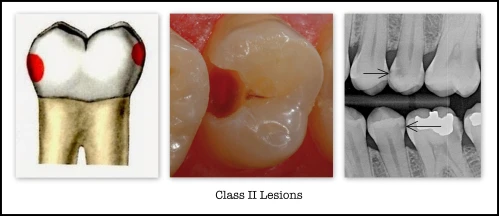
…..
CLASS III LESIONS: Involve the proximal surfaces of the anterior teeth which may or may not involve the lingual extension but DO NOT involve the incisal line angle. 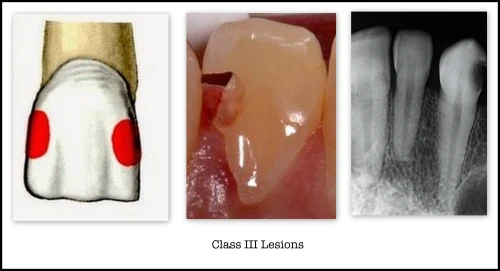
…..
CLASS IV LESIONS: Involve all proximal surfaces of anterior teeth which also INVOLVE the incisal line angle. 
……
CLASS V LESIONS: Involve the CERVICAL THIRD of all teeth, including the proximal surface of posterior teeth where the marginal ridge is not included in the cavity preparation (Do not involve pit & fissure areas) 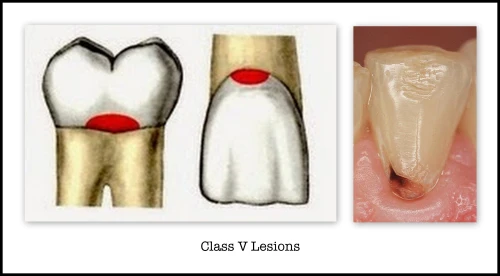
…..
CLASS VI LESIONS: Involve the incisal edges of all anterior teeth and the cusp tips of all posterior teeth.
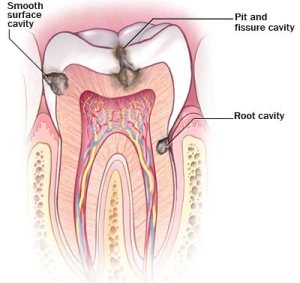
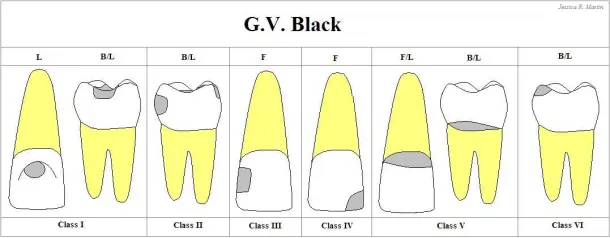
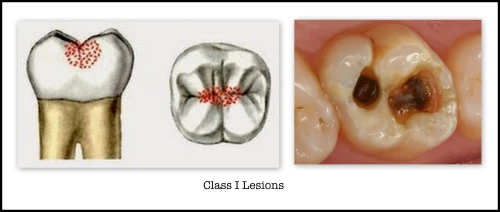
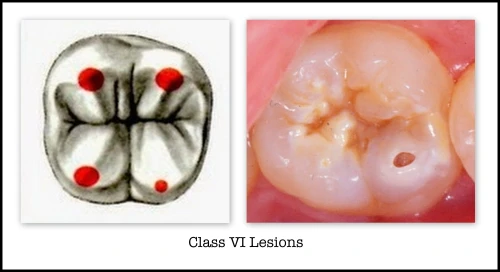
Excellent work. And a reminder that caries isn’t defeated, yet.
LikeLiked by 1 person
As RDSA how do you help me study deep in pathology (dental caries)
LikeLike
Thank you for visiting my blog. 🙂 I completely agree, in my option too much time is devoted on treatment instead of preventive measures in dental field.
LikeLike
Pingback: Cavity Preparation – toothfairydiary
Hello,
I am writing an article about dental composites, can I use all the pictures and photos concerning G.V. BLACK’S CLASSIFICATION OF CARIES?
Thank in advance you for your quick answer
Best regards
Fred
LikeLiked by 1 person
Hi Fred, yes. Please feel free to use any photos and pictures.
LikeLike
Good luck with the article 🙂
LikeLike
Thank you for your prompt response. You confirm that all these illustrations are free to use?
thank you for your reply
Fred
LikeLike
Hello,
My editor asks me if you have the rights on all the illustrations
Thank you in advance for your response
Fred
LikeLike
Very educating
LikeLike
Thank you sir I want to see anything related dental carries
LikeLike
Can a dental assistant apply amalgam to the patient
LikeLike